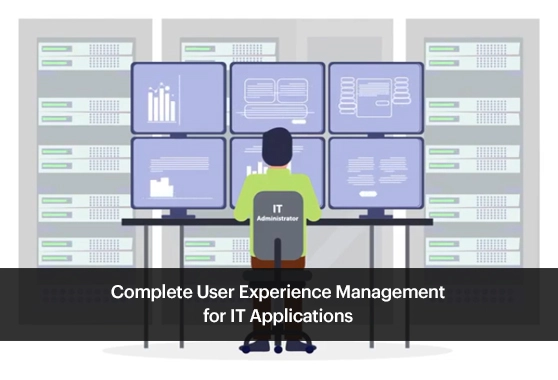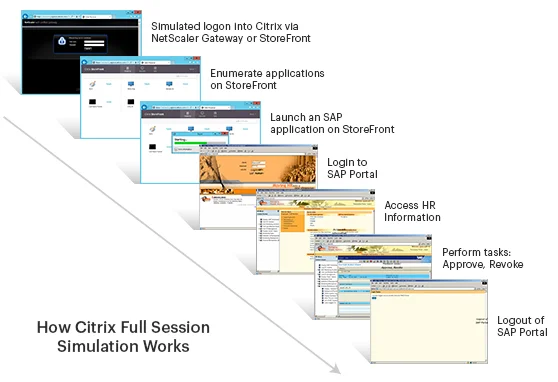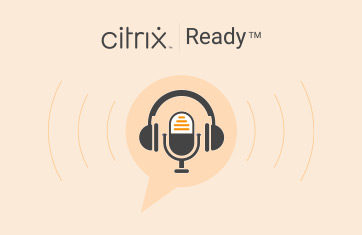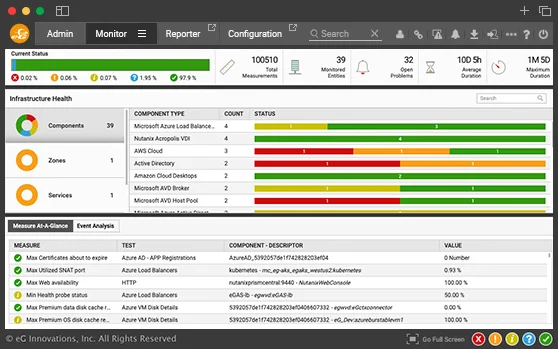Citrix full session simulation
with eG Enterprise
Comprehensive simulation of Virtual Apps & Virtual Desktops sessions for proactive problem diagnosis and troubleshooting
Free TrialFrom resource monitoring
to user experience monitoring
Businesses expect seamless Citrix services for their users, and this means 24x7 service availability, great response times and uninterrupted service delivery. To achieve this, Citrix administrators need to monitor the digital employee experience (DEX). Just looking at CPU, memory, and disk usage trends is no longer sufficient. By monitoring real user data and metrics, administrators can see the actual experience of Citrix users and proactively identify degradations and retrospectively examine issues.
A popular way to monitor Citrix user experience is using the simulation of a user accessing the Citrix farm. The results of periodic simulation highlight whether the Citrix farm is working well and its responsiveness. By checking the status of the Citrix services even when no users are actively accessing the Citrix farm, simulation of user sessions provides proactive indicators of potential problems.
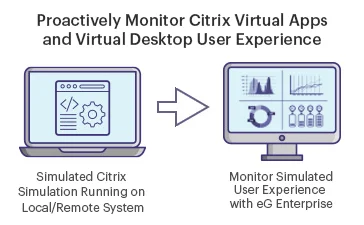
Citrix session simulation with eG Enterprise
eG Enterprise is a purpose-built Citrix performance monitoring, diagnosis and root cause analysis solution that provides deep performance insights for Virtual Apps, Virtual Desktops and all components in the Citrix stack. To provide a complete view of Citrix performance, eG Enterprise embeds the ability to monitor real user sessions as well as simulated sessions.
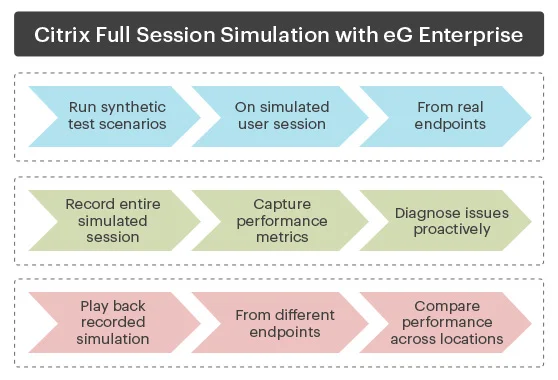
eG Enterprise includes two synthetic simulation approaches for Citrix environments:
- The built-in eG Enterprise Logon Simulator focuses on the logon stage of a Citrix Virtual Apps/Virtual Desktops session
- The eG Enterprise Full Session Simulation for Citrix Virtual Apps and Virtual Desktops goes beyond the logon stage. Administrators can simulate a user accessing different applications within a Citrix session, performing tasks within the session – i.e., using the accessed applications, and finally terminating the session.
In both approaches, the success of the simulation, the overall time taken for the simulation, and the time taken to perform each step are recorded. These results are then analyzed to determine when and how to alert administrators to potential Citrix performance issues.
eG Innovations delivers a robust, reliable and extremely valuable solution to deliver maximum uptime and user satisfaction. Pre-emptive alerting helps us to address performance issues immediately before they affect system and application availability.![]()
Features
How full session simulation works in
eG Enterprise
- eG Enterprise simulates a real user accessing a Citrix session, and records and plays back the scenario 24x7.
- It uses the same client application (e.g., Citrix receiver) that real users access, and performs a sequence of mouse clicks, data entry operations and keystrokes based on pre-recorded scripts.
- Observing the responses at each transaction step, the eG Enterprise matches the results with expected patterns and baselines, and reports the simulation results on an intuitive web console.
- Based on the results, Citrix admins can quickly determine if any application accessed in a session is slow or not working.
A typical example of synthetic monitoring would be simulating a user logging into an SAP application, accessing records, updating information, closing the application, and finally, logging out of the session.
When to use full session simulation vs. logon simulation
When an administrator is looking to understand if Citrix logons are slow and why, a Citrix logon simulator is helpful. However, there are many other aspects to Citrix user experience beyond the logon. If an administrator needs to look at the performance of a client application launched through Citrix in more detail, Citrix logon simulation is not enough.
For example, an administrator may want to see if an SAP client published on Citrix can be launched successfully, if a user is able to logon to the SAP application, query the inventory, update a record, and logout of SAP in a timely manner. To address this requirement, Citrix full session simulation is needed.
- Full session simulation captures various steps within a Citrix session
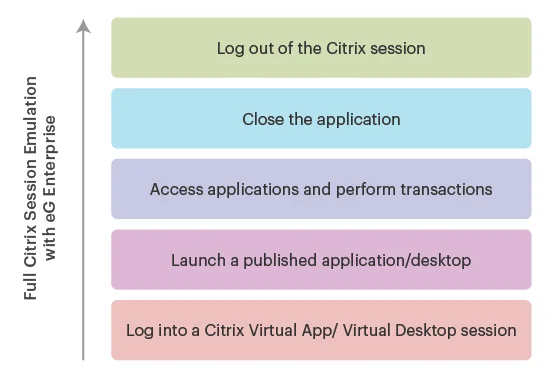
- These steps are recorded as a script, which is then replayed periodically
- The results of the played back simulation highlight the success/failure of the simulation and the time taken for executing each step
| Key questions Citrix administrators can answer using full session simulation: |
|---|
|
Proactive user experience testing and performance assurance
With the recorded Citrix session simulation, you can:
- Collect factual metrics about session performance and Citrix user experience, and identify issues proactively
- Play back from different global or remote endpoints to compare performance by location
- Establish benchmarks for session performance – which can then be used as baselines to compare against real user monitoring metrics
Complement simulated session performance metrics from eG Enterprise with real user logon and session performance metrics obtained from Citrix Director/EdgeSight for complete performance insight.
How synthetic transaction monitoring complements
Real User Monitoring
eG Enterprise supports both real user monitoring and synthetic monitoring of Citrix Virtual Apps and Virtual Desktops sessions. Both approaches are complementary to one another and, together, present actionable insights that Citrix administrators need for troubleshooting and performance fine-tuning. Here are some key differences between the two approaches:
| Real User Monitoring | Synthetic Transaction Monitoring (Using Full Session Simulation) |
|---|---|
| Tracks performance and user experience of real user sessions and transactions | Captures performance and user experience of simulated user sessions and transactions |
| Passive monitoring technique: Continuously monitors real user activity | Active monitoring technique: Only runs when a synthetic test is created and executed |
| Monitoring data is captured from the server side (Virtual Apps servers and Virtual Desktops VMs) | Monitoring data is captured from transactions run on specific nodes from any central or remote location |
| Captured results always depend on actual, real user workload | A pre-defined workload is repeatedly imposed on a target endpoint |
| Is a direct measure of real user experience; usually only available when users are actively logged on, captured by eG Enterprise to allow retrospective investigation of user reported issues. | Is a measure of user experience even when real users are not active |






